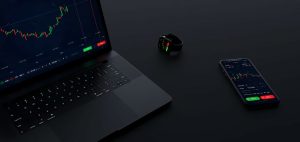Forex trading involves buying and selling different currencies in the international market. It is a highly leveraged market, which means that traders can make large profits with a small investment. However, leverage can also lead to significant losses if not used correctly. In this article, we will explore the concept of leverage in forex and its impact on trading.
What is Leverage in Forex?
Leverage is a tool that allows traders to increase their exposure to the market by using borrowed funds. In forex, leverage is expressed as a ratio, such as 1:50 or 1:100. This means that for every dollar invested, the trader can control $50 or $100 in the market, respectively. Leverage is provided by the broker to the trader, and it allows traders to open larger positions than they could with only their own capital.
For example, suppose a trader wants to buy 10,000 units of the EUR/USD currency pair, and the current exchange rate is 1.2000. Without leverage, the trader would need to invest $12,000 to make this trade. However, with 1:50 leverage, the trader can open the same position with only $240 (10,000 x 1.2000 x 1/50). This means that the trader can control a much larger position in the market, which allows for greater potential profits.
How Much Leverage is Available in Forex?
The amount of leverage available in forex varies by broker and by country. In the United States, the maximum leverage allowed for retail traders is 1:50, as regulated by the National Futures Association (NFA). This means that traders in the US can only control a position up to 50 times their initial investment.
In other countries, such as Australia and Europe, the maximum leverage available is typically higher, up to 1:500 or even 1:1000. However, higher leverage also means higher risk, and traders must be aware of the potential for significant losses.
How Does Leverage Affect Trading?
Leverage can have a significant impact on trading, both positive and negative. On the one hand, leverage allows traders to open larger positions and potentially make larger profits. For example, if a trader invests $1000 with 1:100 leverage, they can control a position of $100,000 in the market. If the price of the currency pair moves in their favor by 1%, they can make a profit of $1000 (1% of $100,000).
On the other hand, leverage can also lead to significant losses if the market moves against the trader. In the example above, if the price of the currency pair moves against the trader by 1%, they would lose $1000, which is their entire investment. This is known as a margin call, where the broker will close the position to prevent further losses.
Therefore, it is important for traders to use leverage wisely and to manage their risk appropriately. This means using stop-loss orders to limit potential losses, and not risking more than a small percentage of their account balance on any one trade.
Conclusion
Leverage is a powerful tool in forex trading that allows traders to control larger positions in the market with a smaller investment. However, it is important for traders to use leverage wisely and to understand the potential risks involved. Traders should always manage their risk appropriately and use stop-loss orders to limit potential losses. By doing so, they can potentially increase their profits while minimizing their risk of significant losses.





